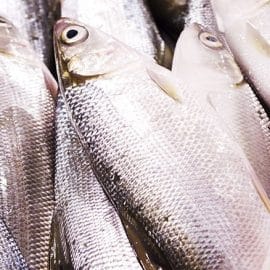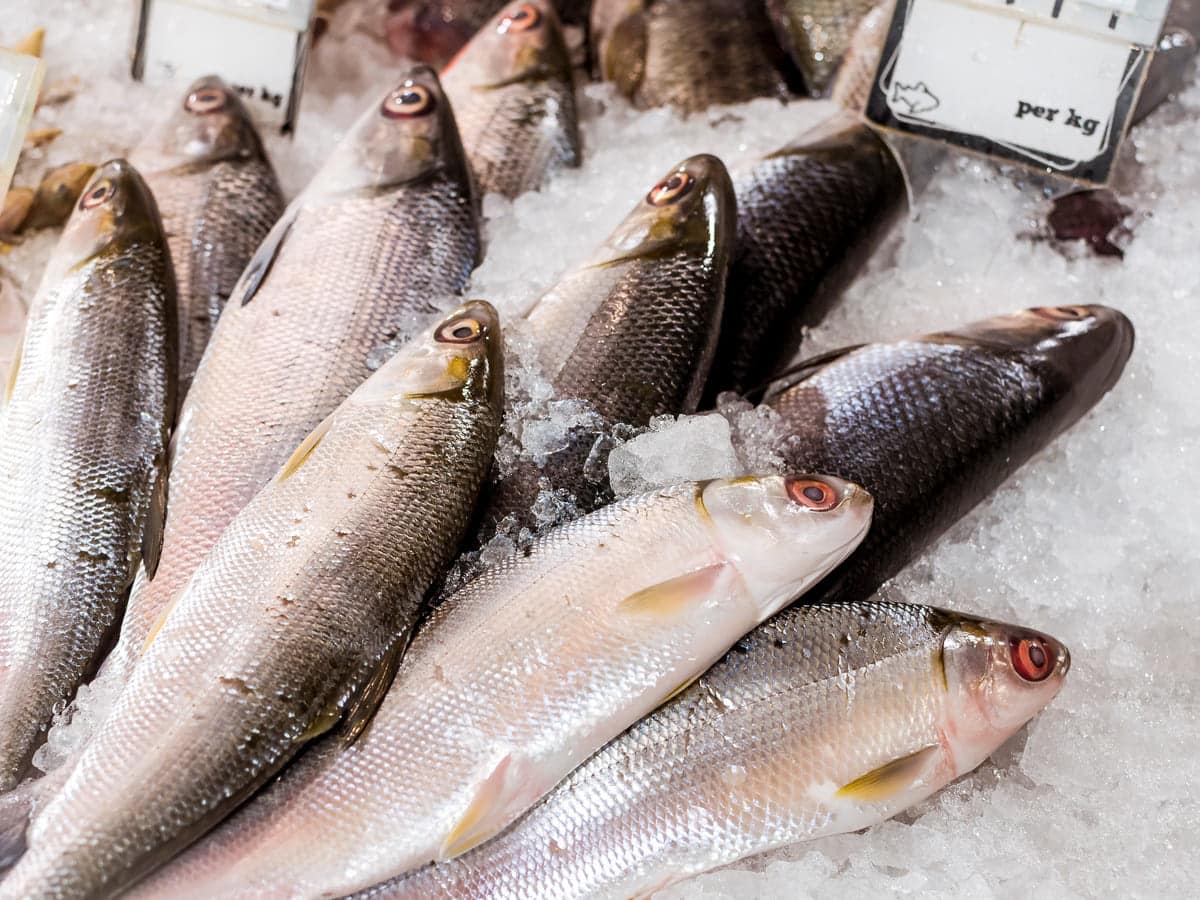
Introduction
Milkfish, also known as Chanos chanos, is an important fish species in coastal waters worldwide. It has a unique combination of characteristics that makes it an ideal candidate for aquaculture and commercial fishing operations throughout its range.
The milkfish is a highly sought-after species for commercial fishermen due to its delicious flavour and high-fat content, making it popular in many cuisines worldwide. It is also used extensively in aquaculture operations where it is farmed in ponds or pens with controlled environmental conditions.
Description & Characteristics
The milkfish (Chanos chanos) is a species of ray-finned fish in the family Chanidae. It is native to the Indo-Pacific region and is widely distributed from South Asia to Australia. Milkfish’s sides are silvery-coloured fish and the back is olive green with a deeply forked tail and long bodies.
Adults typically reach 30–90 centimetres in length and weigh up to 2 kilograms. They have a single dorsal fin with 11–15 spines, a caudal fin, a long anal fin, and two pectoral fins slightly larger than the pelvic fins.
The milkfish has a typical compressed body that is flattened on each side. It has two dorsal fins, one short adipose fin between them, and an anal fin that extends along most of the length of the body. The mouth is large. Its gill rakers are very fine, and it has a heavy eyelid covering its eye. Milkfish has three separate chambers in their stomachs for digesting food which assists them in filtering microorganisms from the water column for feeding.
Species And Taxonomy
Taxonomically, milkfish belongs to the family Chanidae, which contains over 30 fish species. Within this family, it belongs to the subfamily Chaninae and is closely related to the mullet family Mugilidae.
Its scientific name was derived from its Greek root word “chanos”, meaning “jar” or “urn” due to its shape and size. Milkfish is also known as rampon in India and bangus in the Philippines.
Humans had farmed milkfish since at least 2000 BC when they were first domesticated in China. In modern times they are farmed extensively throughout Southeast Asia, particularly in Indonesia and the Philippines, where they are highly prized as a food source due to their high nutritional value and flavour.
As such, they have become one of the most important aquaculture species worldwide, with an annual production of over 1 million metric tons.
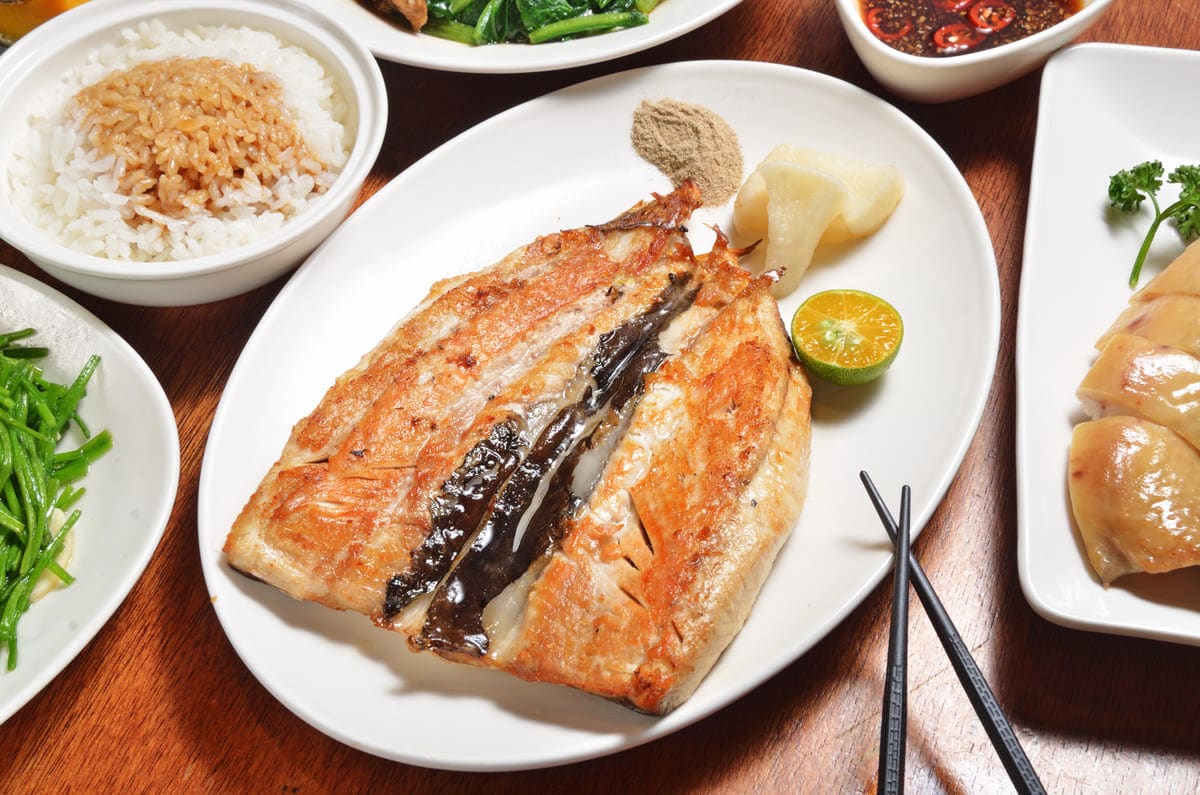
Etymology
The etymology of the term ‘milkfish’ is believed to have been derived from the similar appearance of its scales, which resemble milk droplets. This fish, also known by its scientific name Chanos chanos, is native to tropical and subtropical parts of the Indian and Pacific oceans.
Milkfish are known as bangus in the Philippines (the country’s national fish) and called bandeng in Indonesia.
Habitat And Distribution
The habitat and distribution of the milkfish present an interesting study of ecological diversity. Native to the Indo-Pacific region, this fish species can be found in various habitats ranging from shallow coastal waters to deeper oceanic areas. It is most commonly found in brackish estuaries, bays, lagoons, and coral reefs where there is a combination of fresh and salt water.
Milkfish are also known to inhabit the mouths of rivers and streams, where they feed on small crustaceans, molluscs, and other invertebrates. They can tolerate water temperatures from 18-32°C (65-90°F) and salinities ranging from 0-50 parts per thousand (ppt).
Milkfish have been introduced into numerous areas outside their native range, including parts of South America, China, Japan, Hawaii, and Southeast Asia. The introduction has allowed them to colonise areas with similar conditions to their natural environment.
In some cases, it has negatively impacted local populations as the milkfish compete for resources with other species or cause changes in existing ecosystems due to their feeding habits. Despite this, they remain an essential food source among some cultures and continue to be popularly farmed worldwide.
Milkfish’s Diet
The diet of milkfish is just as varied and interesting as their habitat. Like most omnivores, they feed on a wide range of food items, including zooplankton, molluscs, crustaceans, algae, and other fish. As opportunistic feeders, they will take whatever is available to them in their environment. In the wild, they are known to forage near the bottom of shallow bodies of water for insects and small invertebrates.
Some researchers have found that milkfish are selective feeders; they use sensory organs such as taste buds on their lips to choose what food they eat. This behaviour helps them to avoid consuming toxic or unpleasant substances that could harm them.
Freshwater milkfish can be kept in captivity and fed various commercially available fish foods such as pellets and flakes. Providing your milkfish with a varied diet will help keep them healthy!
Life Cycle of Milkfish
The life history of the milkfish is a fascinating journey that begins with a single egg and concludes with its migration back to spawning grounds. Like an ancient pilgrimage, each stage of the milkfish’s life is imbued with purpose and destiny. This journey is a metaphor for the life cycle of all living things, in which individuals are born, grow, and eventually return to nature.
The first stage of the milkfish’s life cycle is its spawning. To begin their journey, adult milkfish migrate to shallow coral reefs, where they lay their eggs. These eggs then hatch into larvae that drift on ocean currents until they settle in more sheltered areas such as estuaries, mangroves and bays. As they grow older, they become juveniles and move towards deeper waters, feeding on plankton and other tiny organisms.
Once the juveniles reach maturity, they migrate back to the shallow coral reefs from which they began their lives to spawn again. This migration is synchronised with seasonal changes in water temperature and has been observed by scientists for decades. The fish thus complete their lifecycle by returning home – a poignant reminder that all living things eventually return to nature from whence they came.
Milkfish Fisheries
Milkfish fisheries represent a significant part of the global fishing industry, providing employment and income to many individuals. It is estimated that nearly 500 million people worldwide consume milkfish, making it one of the most popular fish in the world. The United Nations Food and Agriculture Organization (FAO) estimates that over two million tons of milkfish are caught yearly for human consumption.
Most milkfish harvested come from artisanal fisheries or small-scale fishing operations that focus on local markets. Artisanal fishermen use traditional nets, traps, and lines to catch fish, often operating boats with outboard motors or sailing vessels.
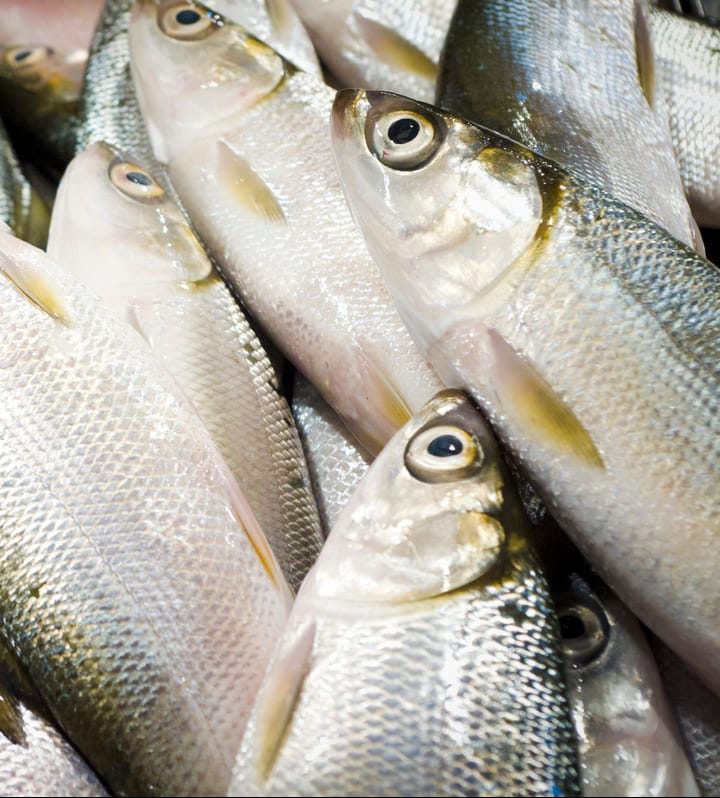
Milkfish are also caught by larger commercial fleets that use more sophisticated vessels and technology to efficiently capture large quantities of fish. These fleets target schools of milkfish in deeper waters and employ techniques such as purse seining and trawling. Additionally, some countries have aquaculture farms that raise milkfish in ponds or tanks for human consumption.
Due to its hardiness, milkfish has been successfully cultured in Southeast Asia for over 140 years. As such, it has become an essential source of food for local populations and an increasingly globalised commodity now being farmed in other parts of the world, such as South America and Hawaii.
Sustainability of Milkfish as Food Source
The sustainability of milkfish as a food source is an important consideration, especially as the global population continues to increase.
Milkfish are harvested from shallow waters near coasts or estuaries using handline fishing or netting. This method allows for selective harvesting, which helps preserve the populations while ensuring a sustainable harvest.
To further protect milkfish populations, some countries have implemented regulations on size limits, seasons, and catch limits for fishermen. Additionally, certain areas may be closed to fishing entirely during certain times of the year to allow for spawning and population recovery.
These measures have effectively maintained healthy milkfish populations while allowing sustainable harvesting practices. Despite this, it is vital to monitor milkfish populations to ensure they remain viable sources of nutrition and sustenance for future generations.
Milkfish As Food
Milkfish is a popular food source in many parts of the world. Its fatty content gives it a unique flavour. Its high-fat content also allows it to be cooked in various ways without losing its texture or flavour. The taste of milkfish is mild yet complex, with subtle notes of sweetness that make it an excellent alternative to traditional fish dishes.
When cooking milkfish, it is crucial to consider its high-fat content. Grilling or baking are two suitable methods to keep the natural flavours intact while allowing the fat to be rendered correctly. Marinating the fish before cooking can add extra flavour and help tenderise the flesh. Finally, adding herbs and spices can enhance the taste and give your dish an even more complex flavour. With just a few simple steps, you can create a delicious meal that will become a favourite in your household.
Processing Milkfish
Among the fish species farmed in the Philippines and Southeast Asia, milkfish is one of the most important. The milkfish feeds millions of people globally with nutritious protein and is a source of income for many aquaculture workers.
Most milkfish processing technologies can be adapted to small-scale operations with little equipment and low investment.
Fish have been preserved by drying since ancient times. The process is simple and does not require complex equipment.Several products are made from milkfish, including whole milkfish, fresh fillets, frozen milkfish, and canned milkfish.
How To Prepare Milkfish
Preparing milkfish is a relatively straightforward process, although it can be time-consuming. Before the fish can be cooked, it must first be cleaned and filleted. This is done by cutting along the fish’s spine and removing the entrails. Once cleaned, the fish can be prepared in a variety of ways.
Here are five common methods for preparing milkfish:
- Grilling: Milkfish can be grilled whole or cut into steaks. To grill the fish, lightly season with salt and pepper and cook over medium heat for about 10 minutes per side or until golden brown thoroughly.
- Frying: Milkfish can also be fried in oil or butter. Heat a pan over medium heat and add enough oil to cover the bottom of the pan. Add seasoned milkfish to the pan and cook for about 5 minutes before flipping over to fry on the other side until golden brown and fully cooked.
- Poaching: Milkfish can also be poached in a flavourful liquid such as broth or wine. Place seasoned milkfish into a shallow pan with enough liquid to cover halfway up the sides of the fish. Cover the pan with a lid and bring to a gentle simmer, then reduce the heat to low and cook for about 10 minutes.
- Steaming: Steaming is another excellent way to prepare milkfish without adding fat or calories. Place seasoned milkfish into a steamer basket set over boiling water in a large pot with a tight-fitting lid. Steam for 8-10 minutes, depending on the size of the fish, or until done.
- Baking: Baked milkfish is tender, flaky, and full of flavour! Preheat oven to 375 degrees Fahrenheit (190 degrees Celsius). Place seasoned milkfish onto a baking sheet lined with parchment paper or aluminium foil sprayed with cooking spray if desired; bake for 20-25 minutes, depending on the size of the fish, until golden brown.
Regardless of which method you choose, ensure that your milkfish has reached an internal temperature of 145 degrees Fahrenheit (63 degrees Celsius) before consuming, as this indicates that it has been safely cooked through all parts of it evenly without any raw areas remaining inside.
Best Side Dishes Paired With Milkfish
Regarding side dishes, many options pair well with milkfish and provide an exciting combination of flavours and textures.
One popular dish to pair with milkfish is stir-fried vegetables. This dish brings out the fish’s natural sweetness while adding a crunchy texture from the vegetables. Carrots, peppers, onions, and mushrooms are all excellent choices for this dish. Additionally, adding fresh herbs like rosemary or thyme will help bring out even more flavour.
Another excellent option would be roasted potatoes or yams, which are flavourful and slightly sweet when cooked properly. These two sides provide a delicious contrast to the delicate taste of milkfish.
When looking for other sides to pair with milkfish, plenty of versatile ingredients can be used as part of a main course or as an accompaniment to other dishes. Rice dishes such as boiled white rice or fried rice work wonderfully when paired with milkfish due to their mild flavour profiles. Similarly, grains like quinoa or bulgur wheat are excellent choices for adding texture and flavour to any meal featuring milkfish. Finally, salads can make for a perfect side dish when paired with this fish; light yet refreshing greens mixed with savoury dressings make for a tasty addition to any meal featuring milkfish at its centre point.
Whatever combination of sides you choose to accompany your milkfish meal is sure to be delicious! With so many options available, creating satisfying meals with this delicate yet flavourful fish at its centre point is easy. Taking care when choosing sides that complement each other in terms of flavours and textures will result in a memorable meal sure to impress your guests!
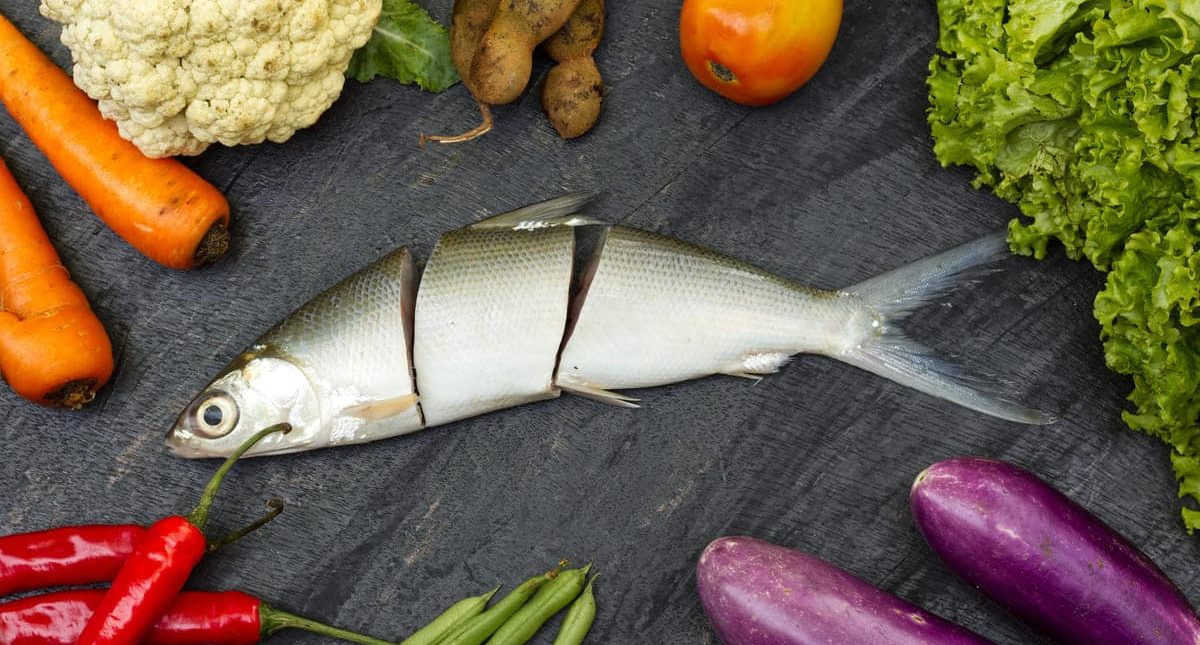
Popular Milkfish Recipes
Native to tropical and subtropical regions such as South East Asia and Indonesia, milkfish are highly valued for their delicate flavour and ease of preparation. In addition to being eaten fresh, milkfish can be cooked in various ways. Popular recipes include grilled fish, fried fish with garlic sauce, steamed fish with ginger or chilli sauce, and fish cooked in coconut oil.
Fried Milkfish or “daing na bangus” is a traditional dish in the Philippines. Butterflied Milkfish are slit from top to bottom, exposing only the belly. Typically, the fish is deboned, mixed with vinegar and garlic, and then fried. Serves as a breakfast item.
When preparing milkfish, it is crucial to remember that it has very soft flesh, making it prone to overcooking. To prevent this from happening, cooks should use low-heat methods such as steaming or grilling for the best results. Additionally, the skin should be scored before cooking to ensure even cooking throughout the entire filet. When served with side dishes like rice and vegetables, the combination creates an incredibly flavourful meal that will please any palate.
Milkfish can also be used in other soups, curries and stews. Its mild flavour and flaky texture make it an excellent choice for hearty meals with many flavours but not too much fat or calories.
Whether served as part of a main dish or enjoyed with some simple seasonings and side dishes, milkfish is sure to become an instant favourite among seafood lovers everywhere.
Comparison To Other Fish
The milkfish is a particular species of fish distinct from other varieties. Although it may share specific characteristics with other species, the milkfish has unique characteristics that set it apart.
For example, milkfish typically have a more elongated body than other varieties and are known for their high-fat content. This makes them an excellent source of nutrition, but it also means that they may not be as suitable for some cooking as other fish. Despite this potential drawback, milkfish can still be enjoyed in many dishes when appropriately cooked.
Milkfish stand out for their nutritional value and versatility in the kitchen compared to other fish species. In contrast to many other popular fish choices such as salmon and tuna, milkfish have a much higher fat content – up to around 20% by weight – which can make them richer tasting and more satisfying.
Additionally, due to their mild flavour and flaky texture, they are often used in various Asian cuisines, such as Indonesia and the Philippines, which are usually prepared with coconut milk or chiles. Furthermore, because of their high fat content, these fish can be grilled or fried without becoming dry or losing flavour like some leaner varieties. This makes them ideal for those who want a flavourful meal without sacrificing nutrition.
It is clear that while the milkfish may be only some of people’s first choice when it comes to seafood, its unique characteristics make it an excellent addition to any menu. With its high-fat content and versatile flavour profile, the milkfish offers a great alternative to more traditional seafood options while providing plenty of nutritional value. Moreover, when cooked correctly, this fish can provide a delicious meal that will satisfy any appetite or palette – no matter how picky one may be!
History of Milkfish
The history of milkfish dates back centuries, with evidence of its consumption in Asia and the Pacific region. The fish has been an essential part of diets in the area, with various uses, including being dried and salted for preservation and being consumed fresh. In some countries such as India and Taiwan, milkfish is also used to make a type of caviar known as kamaboko.
Milkfish have had a significant role in the culture and traditions of many countries in the region. It is believed that consuming milkfish in Vietnam can bring good luck and fortune, while in Indonesia, the fish is commonly offered during religious ceremonies. In fact, during the Chinese New Year celebrations in Singapore, it is traditional for families to offer up a plate of cooked milkfish as an offering to their ancestors.
Conclusion
Overall, milkfish provides a nutritious source of protein that can be enjoyed safely with proper preparation and storage techniques. Its pleasant flavour and nutritional content make it an excellent addition to any diet.

